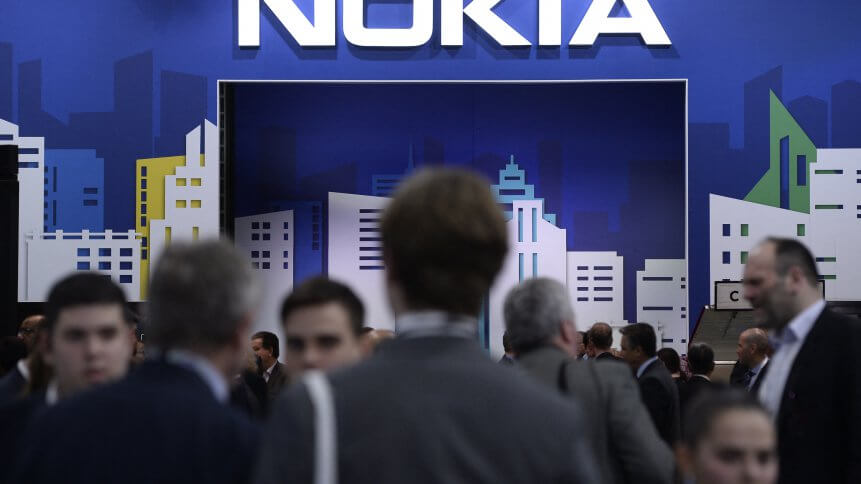Nokia downsizing to fund its 5G R&D

- Nokia plans on investments in 5G R&D as the firm looks to “sacrifice some short-term margin to ensure leadership” in the connectivity standard
- The company plans to cut up to 10,000 jobs worldwide over two years, and will use the approx. US$713m annual savings to catch up with rivals on 5G technologies
- Nokia expects to have a workforce of 80,000-85,000, down from 90,000 today
Nokia has unveiled plans to reduce its workforce from 90,000-strong to 80,000 at most within the next 24 months, as part of a €600 million (US$713.49 million) cost-cutting program, aimed at boosting its investments in 5G. The announcement came on the heels of three separate deals Nokia has inked with Google Cloud, Amazon Web Services (AWS), and Microsoft to help it tackle 5G open and cloud RAN, as well as private network products.
The Finnish telecommunications company believes resetting its cost base would allow it to invest in research and development and long-term growth areas, including in 5G, cloud technologies, and digital infrastructure. Nokia’s planned cuts include 96 job losses in the UK, while sparing France this round after 1,233 jobs were cut there last year, which slashed the workforce of its French subsidiary Alcatel-Lucent by a third.
These plans are global and likely to affect most countries, according to a Nokia spokesperson. “It is too early to comment in detail, as we have only just informed local works councils and expect the consultation processes to start shortly, where applicable,” the spokesperson said. About 300 jobs are expected to go in Finland, mainly at the Nokia headquarters and the spokesperson said the company would continue to recruit in the 5G area in the country, and that the changes would be a net positive.
Just last year, Nokia employed nearly 40,000 people in Europe, 20,500 in the Asia-Pacific region, 13,700 in Greater China, 12,000 in North America, and 3,700 in Latin America.
Nokia heating up in the race to 5G
Since Nokia CEO Pekka Lundmark took over the company’s top position in August 2020, he has stated his aim to make Nokia the leader in 5G, even at the expense of the company’s short-term profitability. In a period of six months, he has revamped the company’s strategy and organization.
This is because Nokia fell behind its main competitors, China’s Huawei and Sweden’s Ericsson. It missed out on the early rounds of 5G networks after focusing on the integration of Alcatel-Lucent, the French smartphone and wireless equipment firm Nokia bought in 2015. “In those areas where we choose to compete, we will play to win. We are therefore enhancing product quality and cost competitiveness, and investing in the right skills and capabilities,” he said.
Indeed, Nokia tapped top companies to help it tackle 5G open and cloud RAN, and private networks products, inking separate deals with Google Cloud, Amazon Web Services (AWS), and Microsoft. Nokia president of Mobile Networks Tommi Uitto noted “open collaboration is key to the development of new and innovative high-value 5G use cases”. He said the company was “building an ecosystem of public cloud partners that will ultimately support our customers and help them to build compelling 5G use cases”.
The AWS deal involves determining how Nokia’s edge, cloud, and open RAN products can be integrated with the cloud businesses’ infrastructure to accelerate 5G deployments. After testing Nokia’s virtualized, distributed, and centralized units with AWS’s cloud Outposts and Local Zones, the pair will build a proof-of-concept for an end-to-end product that can be used for real-world deployments.
Its deal with Google Cloud expands on an agreement targeting 5G core and edge products signed in January, broadening its focus to include joint development of open and cloud RAN products. Nokia’s Microsoft arrangement involves combining the Finnish vendor’s multi-access edge computing, cloud, and open RAN products with the software giant’s Azure Private Edge Zone to develop 4G and 5G private networks use cases for enterprises.
Apart from increasing investments in 5G – the new generation of broadband technology where Nokia competes with China’s Huawei and Sweden’s Ericsson and lately also with South Korea’s Samsung – Nokia said it would also invest in cloud and digital infrastructure.










